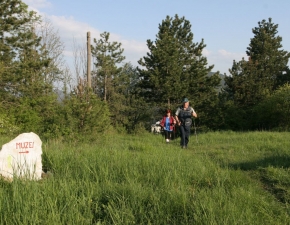
Frogmen underwater vehicles
Although the former Yugoslav submarine P-913 Zeta relinquished the title of the largest and heaviest exhibit at the Park of Military History Pivka in May 2016 to a German WWII-era locomotive, it still remains the most attractive and mysterious exhibit in the museum’s collection in many respects. Part of this fascination undoubtedly stems from the fact that the submarine was designated as a “commando” and is quite different from the classic image that people have of submarines.
The P-913 is relatively small, has only battery propulsion, and, perhaps most interestingly for many visitors, does not have a single torpedo tube or missile launcher, despite being considered by many as the most offensive weapon of the former Yugoslav Navy. Its main weapon was actually hidden inside, as the submarine could transport up to six commandos with only four submariners. While the submarine has already been featured, less has been written about the divers’ operations and equipment.
In 1960, the 82nd Naval Center for the Development of Naval diver units and Training for the entire Navy was established in Tivat, Montenegro. Just a year later, the center was relocated to the island of Sveta Katarina near Pula, close to the submarine base. The direct contact between both units brought many benefits, especially in intense joint naval-diver training and submarine candidates’ diving training.
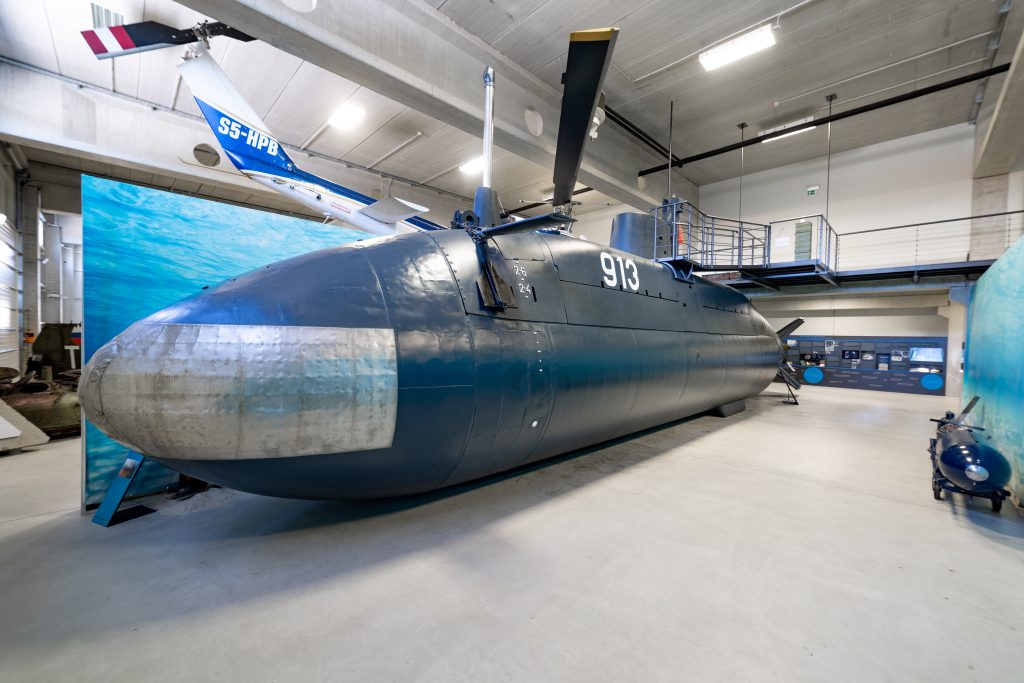
P-913 Zeta in the Park of Military History Pivka. Photo: Simon Avsec
Joint training for diver operations initially focused on transporting divers to the target and their disembarkation when the submarine was on the surface. This negated the advantage of covert transportation and exposed both submariners and divers to the enemy. Therefore, the 82nd Naval Center and the 88th Submarine Division began to develop plans for the exit of naval divers from the submarine. The exit occurs through flood chambers or torpedo tubes when the submarine is stationary on the seabed or at different depths.
Initially, the Sava submarine (P-802) was mainly used, and later the Sutjeska (P-811) and Neretva (P-812) submarines were also used. The fundamental problem quickly became apparent because of the depth of the exit from the submarine. If the depth was up to 10 meters, the problem was not so pronounced, but it was quite different at depths of up to 60 meters, where divers used the Oxymix 3C device on a semi-closed breathing circuit and Nitrox gas mixtures.
In 1971, the 88th Submarine Division left Pula and moved to Split. The intensity of joint training thus decreased somewhat but improved with the relocation of the 82nd center to Divulje near Split and the Lora military port. The 1970s saw the introduction of modern diving equipment as well as the introduction of new, more modern, and powerful submarines such as the P-821 Heroj, P-822 Junak, and P-823 Uskok, at the end of the 1970s, and the last two diesel-electric submarines of the former YNM, the P-831 Sava and P-832 Drava.
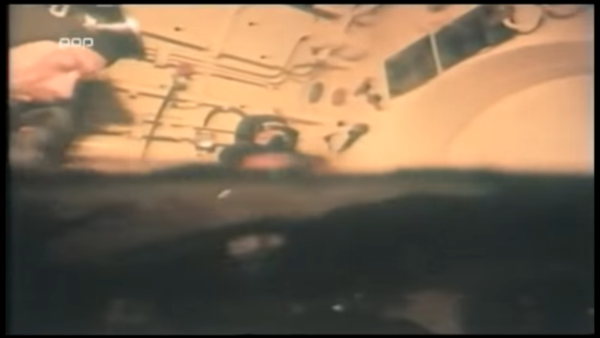
Commandos in the flood chamber of the submarine. Photo: contribution P-913 Zeta. Author: Jure Brankovič, production POP TV
Transporting divers to their operational area always poses a high-risk operation for the crew and the vessel. To reduce the risk somewhat, so-called “riding torpedoes” were developed early on, which allowed for faster transport of divers and explosive devices. Italian divers also successfully used the mentioned concept when they sank the battleship Viribus Unitis in Pula with primitive torpedoes in November 1918. The concept matured during World War II when the Italians again vigorously used it.
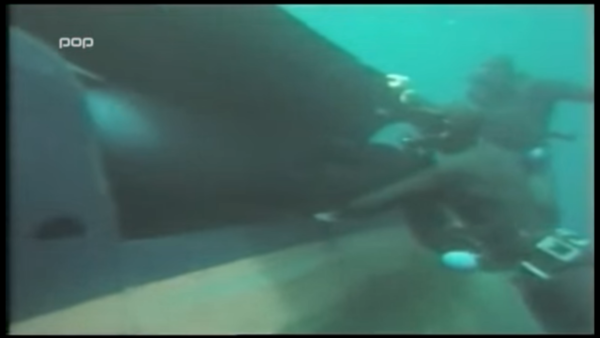
Underwater vehicle R-1 in the transport compartment of the divergent submarine. Photo: contribution P-913 Zeta. Author: Jure Brankovič, production POP TV.
The 82nd Naval Center had a few French T-14 Pegasus manned torpedoes in use, based on which the Zagreb Shipbuilding Institute (Brodarski inštitut Zagreb) started developing project documentation and a navigation device NU-10 for a vessel intended for transporting one diver. The R-1 vehicle was 3.7 meters long, weighed 160 kg without cargo, had a working depth of up to 50 meters, and had a total range between 15 to 20 km, depending on the speed, ranging from 4.4 to 5 km/h.
One advantage of the R-1 was that it could be launched from a submarine underwater through the 533-millimeter torpedo tubes of Yugoslav submarines, significantly reducing the likelihood of enemy detection. The vessel was of the “wet” type, and the diver lay on the top of it during the voyage, protected from the water flow by a Plexiglas windshield. Depth control was performed through the front handle, while steering was performed with the feet at the back of the R-1.
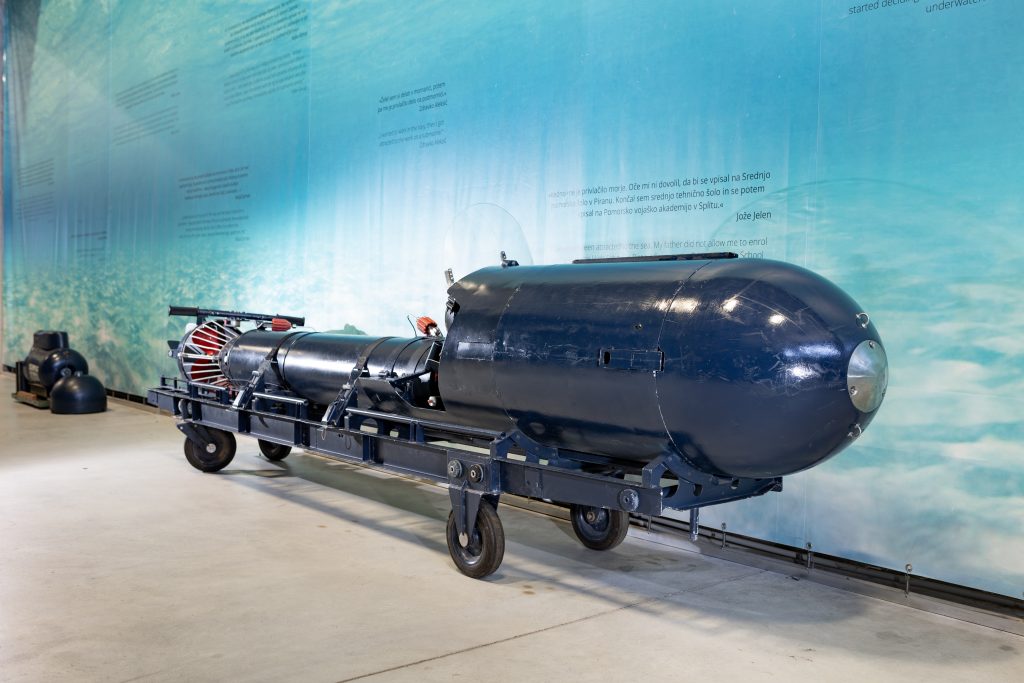
R1 in Pivka. Photo: Simon Avsec
The underwater torpedo also had a transport compartment in the front, where either two magnetic mini M71s (each weighing 14.5 kg, containing 3 kg of TNT and a time fuse) or one diver’s M66 mine (50 kg, 27 kg of TNT, time fuse) could be placed.

Divergent mini M66 and M71 at the Park of Military History. Photo: Archive of the Park of Military History
The Institute of Maritime Studies Zagreb developed a larger two-seater vessel, R-2, for the needs of divers, which was transported by submarines on the external hull. The vessel was 4.9 meters long, weighed 1400 kg without cargo, had a working depth of up to 60 meters, and had a total range of 33 to 43 km, depending on the speed, which ranged from 6.9 to 8.1 km/h. Like R-1, it was powered by batteries. In addition to delivering divers and their operations in enemy waters, R-2 was also intended for underwater observation and protecting ports, anchorages, and minefields from enemy divers.
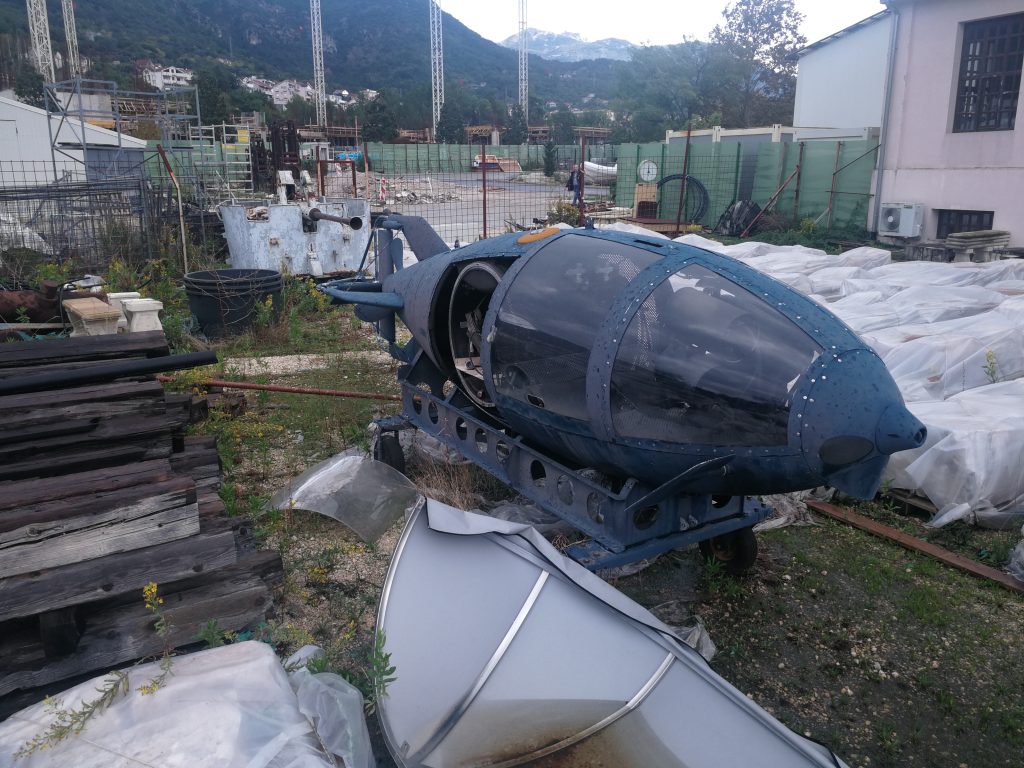
Vessel R-2 in Tivat. Photo: Janko Boštjančič
With the development of Una-class submarines in the 1980s, both submariners and divers were provided with a purpose-built vessel designed specifically for conducting covert operations along the enemy coast or on any potentially occupied islands in the Adriatic. Six Una-class stealth submarines represented the striking force of the navy, which could also operate on the opposite Italian side of the Adriatic in the event of a conflict.
With the development of Una-class covert operations submarines in the 1980s, both submariners and divers were given a purpose-built vessel designed for conducting covert operations along the enemy coast or on potentially occupied islands in the Adriatic. Six covert operations submarines formed the backbone of the navy, which could have operated on the opposing, Italian side of the Adriatic in the event of a conflict.
Submarines like the P-913 Zeta from Pivka would approach the operational area unnoticed and then descend to a depth of 43 meters, where they would move the divers to the central flooding chamber. Once the chamber was hermetically sealed, it would fill with water. The equalization of pressure would enable the divers to exit above the submarine’s hull, removing the R-1 underwater vessels from dedicated transport compartments and heading towards their final destination. Although returning to the submarine was possible, according to reports, divers usually retreated to the interior of Italy. They continued their covert operations after carrying out attacks on ships, key objects, and infrastructure. The covert operations submarine would close the hatch upon the departure of the last diver, expel water from the flooding chamber, and return home.
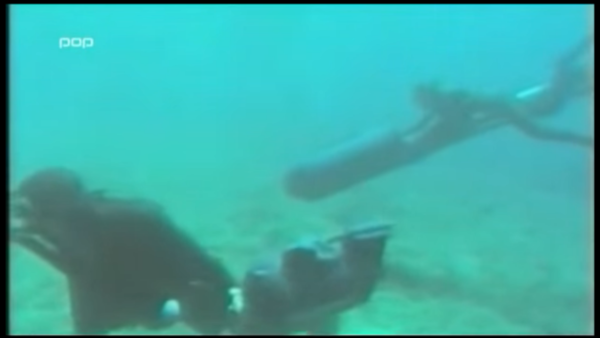
The arrival of commandos with the R-1 vessel and the underwater mine M66. Photo: contribution P-913 Zeta. Author: Jure Brankovič, production POP TV
Both submariners and divers did not have to use their knowledge against a potential adversary in the Adriatic. Yugoslavia sank in its fire, along with a large part of the knowledge, experience, human and industrial potential, and pride of the former submarine forces of the navy. Part of this legacy can be seen in the Park of Military History thanks to the Society of Submariners, donors, the Municipality of Pivka, the Sergej Mašera Museum, and the Ministry of Defense of the Republic of Slovenia.
In the Park of Military History Pivka, where the P-913 Zeta submarine has been exhibited since 2011, we have been striving to find and acquire the R-2 underwater diver vehicle for years. Although it was believed that, in addition to a few museum specimens, all were destroyed, we accidentally discovered another one last autumn. In September 2021, the Košana Volunteer Fire Department in Slovenia donated a TAM 125 T10 firefighting vehicle to the Boka Volunteer Fire Department in Tivat, Montenegro. Given that the Zeta submarine came to Pivka from Tivat, the vehicle handover was carried out in the Park. The delegation from the Municipality of Pivka, which later visited Tivat, also invited the director of the Park, Mag. Janko Boštjančič, and his colleague Ana Čič.
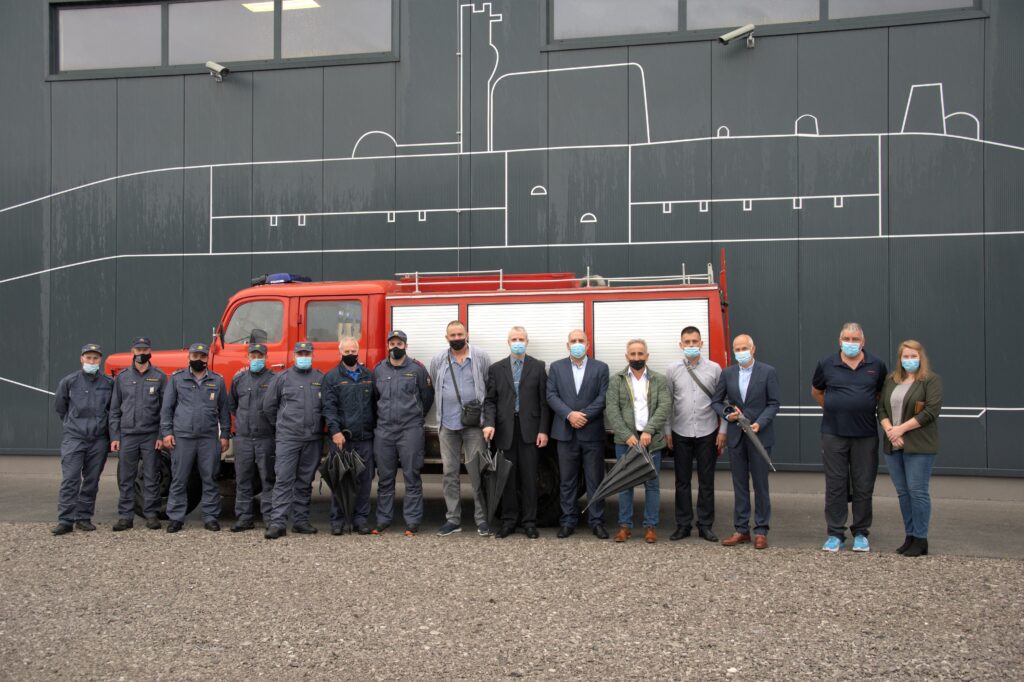
The transfer of the TAM 125 T10 vehicle to the firefighters of the Boka Fire Department from Montenegro in the Military History Park in 2021. Photo: Archive of the Military History Park Pivka
The delegation also visited the Maritime Heritage Museum in Tivat, where they met with former submariners who have visited Pivka Park several times. These individuals pointed out that there was another R-2 vessel in an outdoor storage area behind the museum. Since the Slovenian defense attaché in Montenegro, Navy Captain Boris Geršak, joined the Pivka delegation during their visit to the museum, the action began immediately. Slovenia officially requested the donation of the exhibit, and the Montenegrin Ministry of Defense quickly granted the request. On September 20, 2022, during an official visit by Defense Minister Marjan Šarec to Montenegro, an agreement was signed to donate the museum exhibit, which arrived in Slovenia at the end of the same year.
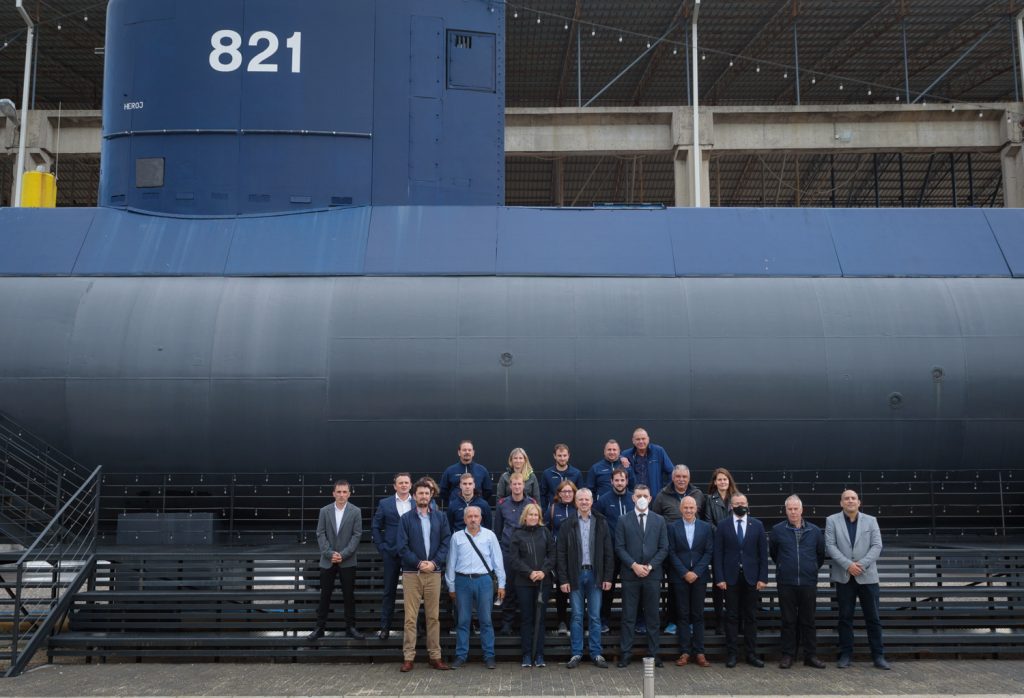
Visit of the delegation from the Municipality of Pivka in Tivat. Photo: Archive of Tivat.
Visitors to the park can visit the submarine accompanied by former submariners during the Submarine Weekend on April 15th and 16th. After the submarine exhibition, seasoned sea wolves will guide visitors through the submarine that weekend and present their own experiences of life and operation beneath the sea surface.
Boštjan Kurent, curator in the Park of Military History in Pivka















